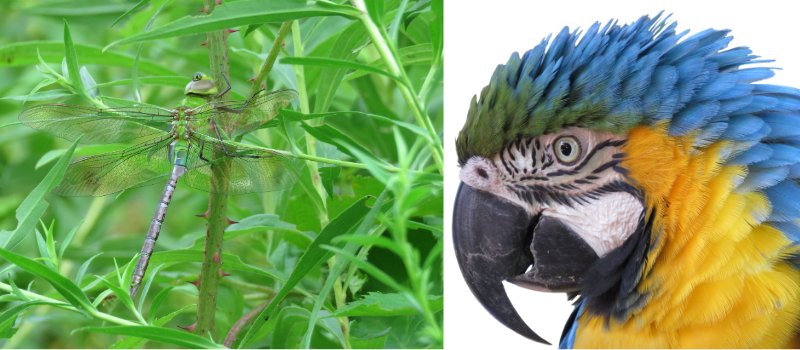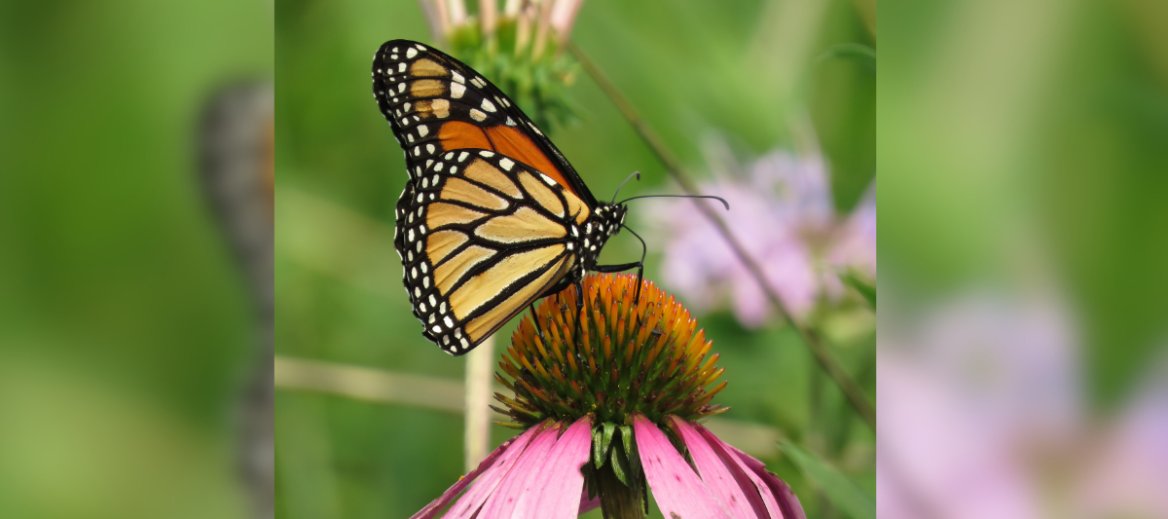By Meg Earsley, Franciscan Sister of Perpetual Adoration
Saint Francis got it. As I reflect on the wonders of creation, it is clear to me that Francis and I have similar perspectives. We see creation and are enamored with the incredible work of God. The Canticle of the Creatures was written in deep appreciation of all creatures. Each word praises God in their very being.
“Praised be to You my Lord
with all Your creatures,
especially Sir Brother Sun …”
I sit quietly with God, watching the sunset on the overlook on FSPA Land – St. Joseph Ridge. I was invited to this time with God, called while on retreat to stay in this space. I find myself wondering what I could be accomplishing, but God gently reminds me that this is what is important.
And so I wait and immerse myself, remembering my createdness. Creatures I have been blessed to witness — living their praise — emerge and visit me in my memories.

Overlook at FSPA Land - St. Joseph Ridge in La Crosse, Wisconsin
It is summer, and a green darner dragonfly perches on a plant stem in a field, waiting for her dinner of a mosquito, wasp or perhaps a butterfly. I would never have noticed her if I hadn’t seen her flying a moment ago. In a month or less, she will begin her migration to Texas or Mexico where she will die after laying eggs. Her children will spend their lives where their mother passed, but their children will return north on their own migratory path to arrive near the birthplace of their grandmother.
In the same native prairie, a monarch dines on delicious purple coneflower nectar. Vivid colors assail my vision as I watch the show from the forest’s edge. He depends on the nectar for his migration. The coneflower is often the most noticeable in the natural prairies of the Midwest, feeding monarch butterflies, sphinx moths, honeybees, bumblebees and other pollinators. It feasts as well, stretching its strong, green stem to reach the rays of the sun, part of the miracle that is photosynthesis.
Summer has left and winter is beginning to say goodbye as well. A red squirrel soaks in the early spring sun, chittering to anyone who will listen. She is warning everything living of a suspicious invader — me! Slightly offended by her cranky behavior, I respond. I tell her I am a friend, not a foe. My words are ignored, and her territorial berating continues. I am forced to admit defeat and move on. As I leave, she locates a stash of pine tree seeds she collected last fall when there were more than she could gather. She enjoys what she has harvested from hundreds of pinecones. All her hard work has paid off. She returns a gift, too. She will not consume all the pine seeds she has accumulated. As the sun becomes warmer and the leaves begin to show in the forest, baby pine trees will sprout where she has planted them.

Five thousand miles away, it is autumn. A blue and yellow macaw perches in a Bolivian guava tree, dining on its fruit. From tail to beak, he is an incredibly large bird, almost as tall as me. Like the red squirrel in the forests of Wisconsin, through the elimination of undigested seeds, the macaw sows as well. It seems slightly beneath this fetching bird and undignified for the seed, but the end to the unsavory sowing is wide disbursement and a bit of fertilization. As the macaw flies away, his brilliant yellow feathers catch the sunset. I am fortunate to witness his majesty.
The circles of interspecies dependencies widen in my mind’s eye to ecosystems moving into ecotones, transforming into the next ecosystem, and the next ecosystem, and the next. The dragonfly needs green plants for camouflage and water with abundant life to feed her young. The coneflower needs direct sunlight and small birds to eat and distribute its seeds. The red squirrel needs tall grass to build multiple nests in its territory and fresh water for drinking. The blue and yellow macaw needs palm tree hollows for nesting and pollinators to fertilize the fruit tree’s flowers.
I am aware that my human mind can barely comprehend the infinite, complex relationships from the microscopic to the cosmic. This is both humbling and wonderful! My curiosity is transformed into wonder as I immerse myself in this contemplation of vastness. I begin to grasp, in the smallest way, the creative genius of God. I see these creatures praising God in their participation in the spiraling, tangled, connected, expanding and contracting, intimate and heartbreaking, beautiful community that is our world.
“How is this possible?” I ask God in total sincerity. I wait for the answer, and I rest in the mystery. The feather-light response I receive … is overwhelming love.
Photos by Sister Meg Earsley

